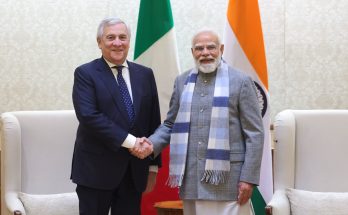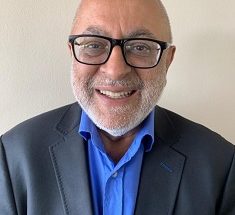
Bandar Seri Begawan, Brunei’s capital, has just witnessed a series of conferences, attended not only by ASEAN foreign ministers but also their partners and interlocutors ranging from Canada to Mongolia. An assessment of deliberations and decisions taken at these meetings, especially from India’s perspective, may help in refining our understanding of ky developments in the region. From India’s viewpoint, three meetings (July 1-2) were of critical importance: 11th India-ASEAN Ministerial Meeting, the 3rd East Asia Summit Ministerial Meeting, and the 20th ASEAN Regional Forum Meeting.
India-ASEAN: High growth curve

At the Brunei capital, India’s External Affairs Minister Salman Khurshid and his ten counterparts voiced justifiable satisfaction over the incremental growth of cooperation in the region. The India-ASEAN relationship reached a historic milestone in December 2012 when leaders of ASEAN countries gathered in the Indian capital to celebrate the 20th anniversary of the dialogue partnership and resolved to step up this ‘strategic partnership.’ Buried under a blanket of rhetoric, however, is the uncomfortable fact that six months after the Delhi Summit, Trade in Services and Investment Agreements are yet to be signed. India has made a strong plea to ASEAN for expediting legal processes, resulting in a pledge to sign these agreements in September.
Another noteworthy feature is that India-ASEAN trade has grown well, ‘ten times in 10 years’ since 2002, as Minister Khurshid put it, reaching the US $80 billion level. But, there is now growing concern about the decline in trade in 2012-13. More earnest joint efforts are needed to achieve the target of US $100 billion by 2015.
It is encouraging that 25 different mechanisms are operational at present for crafting multi-layered cooperation through dialogue. India and ASEAN continue to focus on traditional areas – trade, tourism, HRD and agriculture, while exploring possibilities in new areas like environment, renewable energy, SME and space science. India also continues to help ASEAN’s community building, given the latter’s goal to secure a stronger community by end 2015. India’s main contribution is to help the less developed member-states, known as CLMV (Cambodia-LaoPDR, Myanmar-Vietnam), through assistance in IT, education, skill enhancement and teaching of English language.
EAS Meeting
The EAS comprising ten ASEAN countries, their six dialogue partners, the US and Russia, has been functioning largely as ‘a leaders-led forum.’ It considers broader political, economic and social issues. Many of its members would like it to consider strategic and security issues, but this has not been possible due to China’s reluctance so far. Reporting modalities of various ministerial meetings to EAS have been less than clear. The potential of EAS as the region’s highest decision-making forum needs to be realised optimally in future.
The Brunei meeting, in this backdrop, appeared a routine one. The only notable feature was an important shift in emphasis by the US on ‘rebalancing’ under John Kerry, the new US Secretary of State, rather than the ‘pivot’ doctrine advocated by his predecessor. But it predates the deliberations last week.
ASEAN Regional Forum
ARF is a unique platform for political and security cooperation comprising 27 states belonging to Southeast Asia, East Asia, South Asia, Europe and North America. All members of the East Asia Summit (EAS) are ARF’s members, but not all members of ARF are in EAS. At Brunei, the ARF meeting paid attention to political, security and economic questions that fell in the domain of foreign ministers. It has been focussing on Non Traditional Security (NTS) issues, thus leaving hard security and defence questions to the grouping of defence ministers called ADMM+ and maritime security questions to Extended ASEAN Maritime Forum. Discussions in the conference hall seem to have run along expected lines, but those on the sidelines of the Forum were particularly important, ‘the bilaterals’ involving various countries.
South China Sea
Perhaps the most important issue in the Asia-Pacific Region today is the one concerning South China Sea. It has dominated media headlines for long and caused sleepless nights to diplomats. The good news is that temperature is being lowered for the present as China and ASEAN have agreed to adhere to the 2002 Declaration on Conduct (DOC) on the subject and also to continue discussions for negotiating a new Code of Conduct (COC). The two-track dialogue, at the level of senior officials and through a joint study group, is in play. Next meetings are scheduled to take place in Beijing in September.
India has encouraged these endeavours by underscoring the need for maritime security, safety of sea lanes and the unimpeded right of passage of all states. Regarding ‘sovereignty issues’ (read territorial and maritime claims involving China and a few ASEAN countries), New Delhi has maintained that these should be resolved peacefully by the countries concerned. Its opposition to use or threat of use of force has been reiterated clearly. South Block is engaged in a calibrated balancing act to protect its interests and those of the region.
Final Word
Minister Salman Khurshid seemed to have put his time to good use in Brunei by meeting a large number of important foreign ministers, including of Turkey, Bangladesh and China. The bonhomie that the new Chinese foreign minister projected, calling India as ‘a friend and a brother’, was in sharp contrast to the situation in Ladakh just a few weeks back when soldiers of the two countries were staring hard at each other. Nevertheless, the recent series of high-level visits is paving way for a possible visit by Prime Minister Manmohan Singh to China later in 2013.
India did well by reiterating its suggestion to streamline regional architecture with a view to enhancing its effectiveness and creating greater synergy. Voices within the region favouring this goal are becoming louder.
Finally, the meetings in Brunei and Minister Khurshid’s bilateral visit to Singapore that followed, have amply demonstrated that Look East Policy (LEP) is the cornerstone of India’s foreign policy, and partnership with ASEAN is the foundation of India’s LEP. In this context, the decision earlier this month to launch the India-ASEAN Centre, based in New Delhi, is another promising initiative.
( A former ambassador of India to Myanmar and South Africa, Mr. Rajiv Bhatia is presently Director General of the Indian Council of World Affairs (ICWA), the country’s premier think tank. The article reflects his personal views, and has been written exclusively for India Writes, www.indiawrites.org).
Author Profile
Latest entries
 DiplomacyJuly 11, 2014The BRICS journey: Scoring high in Fortaleza
DiplomacyJuly 11, 2014The BRICS journey: Scoring high in Fortaleza China ConnectJune 9, 2014India’s options: Peace and Conflict in East Asia
China ConnectJune 9, 2014India’s options: Peace and Conflict in East Asia India and the WorldOctober 15, 2013Indonesia and India: ‘Companion Souls’ as Strategic Partners
India and the WorldOctober 15, 2013Indonesia and India: ‘Companion Souls’ as Strategic Partners China ConnectSeptember 5, 2013It’s time to alter perception of India and China as rivals
China ConnectSeptember 5, 2013It’s time to alter perception of India and China as rivals






